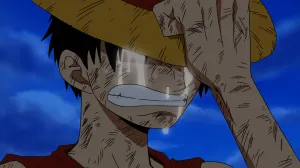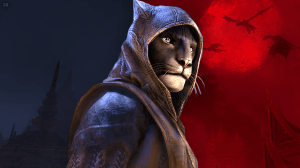
“History doesn’t repeat, but it often rhymes.” Whether or not Mark Twain said those words, their truth is made evident when reading Derf Backderf’s newest graphic novel Kent State in the fall of 2020. This cartoon volume is, first and foremost, a work of history—carefully examining the Kent State massacre and three preceding days with special focus paid to the lives of the four students murdered by the National Guard on May 4, 1970. It is a work of years with copious notes and excellent sourcing supporting the brief narrative of four worsening days along with examinations of the surrounding culture and causes that made the tragic incident possible. Reviewing the facts of this incident 50 years later and many facets of the story reflect nightly news stories from our current moment. Imagery, details, and other connections call out on almost every page, reminding readers that these events are not so distant and too different from our present reality.
Videos by ComicBook.com
Most Americans will recognize different details depending on where they live in the country. Waves of tear gas washing over unarmed protestors, uniformed men with guns covering their names with tape, and the image of a young man lying dead on cement resonate with me as a resident of Omaha, Nebraska where James Scurlock was shot and killed this summer while protesting against police brutality. The student protests that led to the National Guard’s deployment in Kent, Ohio were centered on the Vietnam War. It was a different cause at a different time, but the similarities with our current moment are uncanny. Protests opposing violence and historic injustices are met with the deployment of a police state and mass violence.
The parallels may not be subtle, but they are not forced either. When reading Kent State, it’s easy to imagine it being drafted as a response to our moment, but the quality of history and rich network of stories testify to this being a labor of many years—albeit one with impeccable (or horrifying, depending on your perspective) timing.
Backderf introduces the narrative from his own perspective as a ten year old in Richfield, Ohio, a short drive from Kent State University. It serves to ground the story in our present moment and encourages readers to abandon the illusion often found in high school classrooms that history is separate from our present. This reminder is echoed in the lives of Backderf’s multifaceted cast, one that centers the massacre’s victims as well as one national guard member and an FBI informant. The latter additions primarily support exposition of the aggressors’ circumstances on that day, but the former are provided plenty of space in these pages to engage in lives that would soon end. Growing protests are a constant in their lives as campus life is consumed by them over the course of a weekend, but they are also all still engaged in plans for their futures, classwork, philosophical undergrad debates, and small acts of kindness. They humanize the narrative and provide a set of useful perspectives to consider the context that is so critical to understanding this moment.
Backderf’s unmistakable style does not sway much from the clean lines, direct compositions, and exaggerated characters that made both My Friend Dahmer and Trashed such engaging comics. However, the characters bear a subtly softer approach here. Backderf’s most recent publications emphasized elements of the grotesque in works that dealt with horror and drudgery. The young men and women in Kent State remain Backderf creations on the page, but they are drafted to create a different mood. Their youthful outfits and expressions express a sense of innocence and hope as each of them confronts early struggles, both collective and individual.
Backderf’s prose is drafted like that of a historian or biographer, sometimes expressing a perspective but always careful to frame it carefully with facts, quotes, and direct observation. Yet a romantic angle comes through in the depiction of these young lives, and upon finishing Kent State readers will also see an ode to possibilities unrealized.
It’s the careful attention to the lives lost in the massacre that makes the final sequence of Kent State, a slow motion breakdown of the escalation on May 4 concluding with an autopsy all the damage done by an unknown number of soldiers firing 67 bullets into a small crowd of distant protesters and numerous bystanders. Backderf’s accounting of the conversations and decisions that led to the massacre is presented with the directness and clarity of a Werner Herzog documentary. Even still that factual approach still builds an incredible feeling of tension as reader and creator alike walk towards 13 seconds that shaped American history.
The pain detailed in this sequence is indescribable, and Backderf handles each human being who was killed or injured on that day with care. His epitaphs for the four men and women who died are brief, honest, and utterly gut wrenching when set beside their final moments.
It’s the decision to end the comic only a handful of pages after the massacre concludes that is most striking. Backderf opts to walk through the fallout of the shooting in two pages of plain text that read with a chilly tone. While the prose doesn’t change, the lack of consequences for those responsible make each sentence read like an insult. The final sentence reads with a seething anger as it points this out, and a one-page epilogue featuring Nixon boasting about the positive effects of the massacre allows no space for ambiguity. Even as there are lessons to be learned from this historical study, the perspective of history makes it clear that the injustice of this moment was never rectified.
Kent State attempts to set the record straight, and the combined excellence of research and storytelling makes it easy to witness both the tragic loss of life and senseless police actions that were never punished. Yet as an accomplished historical text, Kent State cannot exist solely in the past. It speaks to our present moment as echoes of that tragic day in Ohio play out in communities across the United States 50 years later. This clear sighted look at history also demands that we do better today—to confront the people responsible for senseless deaths in American streets, especially when those people are empowered by the state. The mistakes of the past are not bound to be repeated today, unless we allow them to be.
Published by Abrams Comicarts
On September 8, 2020
Created by Derf Backderf








